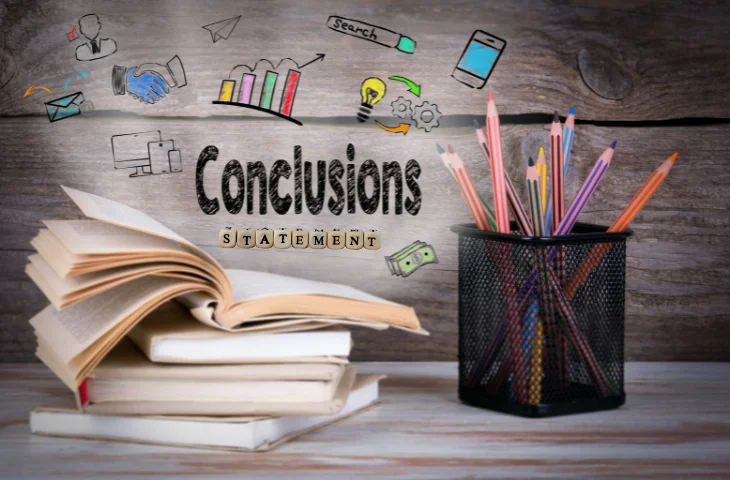Statement and Conclusion is one of the trickiest topics in Reasoning. Questions from this topic are mostly seen in the mains exam. In this blog, we will provide details about the types of questions asked, along with guidance on how to understand and answer them effectively.
What Is Statement and Conclusion in Reasoning?
In reasoning, Statement and Conclusion questions test your ability to logically interpret given statements and identify valid conclusions. A statement is a given fact or opinion, and a conclusion is a logical inference based on that statement.
This topic is widely asked in exams to assess your critical thinking, inference skills, and logical deduction. You need to analyze implied meanings, assumptions, and logical flow.
Skills Required:
- Logical reasoning
- Reading comprehension
- Identifying valid/invalid inferences
- Eliminating extreme or irrelevant conclusions
Why Is Statement and Conclusion Important in Competitive Exams?
Statement and Conclusion questions are a simple yet effective way to test how well aspirants can think logically and make sense of given information skills that are crucial in almost every competitive exam.
| Exam | No. of Questions | Difficulty |
| SSC CGL / CHSL | 1–2 | Easy |
| IBPS PO / SBI PO | 1–2 | Moderate |
| RRB NTPC / Group D | 1 | Easy |
| State PSC / Police | 1–2 | Moderate |
Terms Used in Statement and Conclusion Questions
To solve Statement and Conclusion questions accurately, it’s helpful to understand a few key terms used in the instructions and options. The details are as follows:
| Term | Explanation |
| Statement | A given fact, opinion, or information from which a conclusion must be drawn |
| Conclusion | A logical inference derived from the statement |
| True Conclusion | A conclusion that directly follows from the statement logically |
| False Conclusion | A conclusion that does not follow or contradicts the statement |
| Probable Conclusion | A conclusion that may be true but is not definite |
| Keywords to Identify | Hence, Therefore, So, Thus, Suggests, Implies |
Types of Conclusions That Can Be Extracted from the Question
When solving Statement and Conclusion questions, not every conclusion is straightforward. Some are directly stated, others are implied, and a few might be completely off-track.
| Concept | Explanation |
| Direct Conclusion | Clearly follows from the statement |
| Assumed Conclusion | Can be inferred indirectly or assumed logically |
| Irrelevant Conclusion | Not connected to the statement |
| Extreme Language Trap | Avoid conclusions with “always,” “never,” etc. unless justified |
| Multiple Conclusions | More than one conclusion may follow logically |
| Use of Generalisation | Be cautious when statements generalize or stereotype |
Different Forms of Statement and Conclusion
The Statement and Conclusion reasoning section tests logical thinking. A statement is given, and you need to decide what conclusion can be drawn from it. These questions appear in exams like SSC, Banking, Railways, and other government tests.
1. Action Motive
- Meaning: These questions are based on an action that has been taken. If an action is always done with a particular purpose, then the conclusion assumes that purpose.
- Example:
Statement – “The company has launched a free training program for fresh graduates.”
Conclusion – “The company wants to create a skilled workforce for the future.”
2. Cause and Effect
- Meaning: These questions deal with a cause given in the statement and the effect that follows. If the cause generally results in a specific effect, the conclusion is valid.
- Example:
Statement – “Heavy snowfall has blocked several roads in the hill areas.”
Conclusion – “Tourists may face travel delays in those areas.”
3. Keywords
- Meaning: Some questions rely on keywords in the statement. These words help to judge whether a conclusion is definitely true, probably true, or definitely false.
- Common Keywords: some, all, none, never, always, sometimes, must, cannot.
- Example:
Statement – “Some shops in the market remain closed on Sundays.”
Conclusion – “All shops in the market remain closed on Sundays.”
This is false because the word some does not mean all.
What Are the Types of Statement and Conclusion Questions in Reasoning?
The types of questions that are commonly asked are as follows:
- Direct: Straightforward conclusion from a single statement
- Puzzle-based: Combined with situation-based or caselet-style logic
- Coded (symbol-based): Uses logic symbols or condition codes
- Mixed-concept reasoning: Merged with syllogism or assumptions
Statement and Conclusion Formulas for Reasoning
The details about the formulas used in these types of questions are as follows:
- True conclusion = Universally valid + Supported by statement
- Probable conclusion = Likely but not explicitly stated
- False conclusion = Contradicted by statement
- Extreme language → usually false unless supported by facts
- Avoid assumptions beyond the statement
Statement and Conclusion Tricks for SSC CGL and Other Exams
Tricks that are useful for these types of questions are:
- Read the statement carefully, not just the conclusion.
- Avoid personal opinions or real-world facts—stick to the logic in the statement.
- Be cautious with extreme words: “always,” “never,” “only.”
- If even one conclusion fails logically, “only conclusion I follows” might be correct.
- Use Venn diagram or elimination method when confused.
- Check if the conclusion introduces new information—if yes, it’s likely invalid.
Solved Statement and Conclusion Questions from 2024–25 Exams
SSC CGL 2024 Tier 1 Shift 2 – Memory-Based
Statement: The government has decided to increase the import duty on gold.
Conclusion I: The government wants to reduce the import of gold.
Conclusion II: The government earns more by increasing import duty.
Answer: Only Conclusion I follows
Explanation: The decision implies intent to reduce imports. Earning more is an assumption, not stated.
IBPS PO 2024 Memory Based
Statement: Industrial growth in India has slowed in the past decade.
Conclusion I: India’s economic policies have failed.
Conclusion II: There is a need to relook at industrial strategies.
Answer: Only Conclusion II follows
Explanation: Conclusion I is extreme. Conclusion II is logical and based on the issue stated.
RRB NTPC 2024 – Based on Memory
Statement: Schools should allow students to use smartphones.
Conclusion I: Smartphones help in modern learning.
Conclusion II: Students misuse smartphones during school hours.
Answer: Only Conclusion I follows
Explanation: Conclusion I can be inferred. Conclusion II adds unrelated negative assumption.
Statement and Conclusion Concepts for Bank Exams
Bank exams like IBPS and SBI PO often frame these questions in coded format or involve multi-line statements.
Example (From SBI PO Mains 2024 – Memory-Based):
Statement: All accounts are verified only after KYC is complete.
Conclusion I: KYC is compulsory for account verification.
Conclusion II: Without KYC, accounts cannot be verified.
Answer: Both follow
Common Mistakes to Avoid while Solving Statement and Conclusion
Even though Statement and Conclusion questions may seem easy, many candidates make small mistakes that cost them marks. These errors usually happen when we rush through the question or assume things that are not given.
- Assuming real-world knowledge beyond the statement
- Falling for extreme language (always, never)
- Choosing a conclusion that feels correct but isn’t logically connected
- Ignoring the actual wording in conclusions
- Not analyzing both conclusions independently when asked
What Are Related Topics I Should Revise Next?
Topics you should revise next are as follows:
- Questions based on Time and Distance
- Rules and Practice Questions of Simplification
- Shortcuts and Patterns of Number Series
- Various types of Questions Based on Data Interpretation
- Tricks & Examples of Inequalities
FAQs
Check if the conclusion is directly supported by the information in the statement—without adding outside knowledge or assumptions.
No. Treat the given statement as 100% true even if it sounds unrealistic. Stick to the logic within the question.
Look for extreme words, unrelated topics, or conclusions that introduce new ideas not present in the statement.
No. Avoid real-world logic. Answer only based on the statement given, even if it contradicts reality.
Break the statement into smaller parts. Focus on keywords and core meaning to match the conclusions logically.
- SBI PO Mains & Final Score Card 2025 Out, Check Mains and Interview Marks
- SSC CGL Tier 2 Paper 1 Preparation Tips, Check now
- SSC CGL Tier 2 Last Minute Tips, Tricks, and Strategies
- SSC JE Answer Key 2025 Out on 19th December, Download Paper 1 Response Sheet
- Delhi Police Exam Shift Timings 2025, Check Exam Timings
- SSC CGL JSO Statistics Paper, Most Imp Questions & Topic Weightage

Hello, I’m Aditi, the creative mind behind the words at Oliveboard. As a content writer specializing in state-level exams, my mission is to unravel the complexities of exam information, ensuring aspiring candidates find clarity and confidence. Having walked the path of an aspirant myself, I bring a unique perspective to my work, crafting accessible content on Exam Notifications, Admit Cards, and Results.
At Oliveboard, I play a crucial role in empowering candidates throughout their exam journey. My dedication lies in making the seemingly daunting process not only understandable but also rewarding. Join me as I break down barriers in exam preparation, providing timely insights and valuable resources. Let’s navigate the path to success together, one well-informed step at a time.
